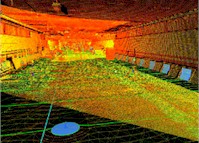 44.493
Issues in Criminal Justice Technology & Security
44.493
Issues in Criminal Justice Technology & Security
Problems:
Lay people tend to put total faith in DNA fingerprints, but it
isn't an automatic, fail-safe technique, however:
- poor handling may result in contaminated
sample, environmental
factors may result in its degradation,
labs may be run poorly, etc.
- DNA evidence can be planted at the scene.
- Major backlog in untested convicted
offender data base samples.
- Both the science of DNA profiling
and testing protocols have been questioned (as a result, the
National Institute of Standards
and Testing (with NIJ funding) developed Standard
Reference Material (SRM) 2390 containing a set of materials
to be used when doing analysis. It "enables forensic scientists
to ensure right answers and pinpoint when and where mistakes
are made. The standard also lets labs show that its daily working
standard is traceable to NIST, which is important if lab results
or test protocol are challenged in court."
- 1996 NAS report stressed that investigators and crime scene technicians
must use meticulous care in gathering evidence and in maintaining
the chain of custody. The committee suggested that evidence be
divided into two parts, with one set aside for testing by a second
laboratory if requested by the defense. It also advised crime
labs to seek accreditation for DNA analysis by the American Society
of Crime Lab Directors.
Did over-reliance on DNA slow the Worthington
investigation?
 Readings:
Readings:
 Case
study: forensics program in a small city
Case
study: forensics program in a small city
Crime Scene
Investigation technology
High-Definition Surveying
creates a virtual
crime scene that can be constantly revisited, seen from different
perspectives:
- originanally developed for
civil engineering
- it projects laser light in a
360 degree horizontal circumference. As the light hits objects,
it reflects back in a "point cloud" of light that is
registered by a digital sensor.
- These millions of data points
are used to create 3-D spatial coordinates to create the virtual
crime scene.
- among other benefits, it's easier
to show a jury a 3-D representation.
- eliminates the bias seen in
crime scene photos or artists' representations.
- Perhaps most important, it can
reduce contamination of the crime scene: create the 3-D representation
when you first approach the scene, so that nothing is disturbed.
One British expert says he uses SDS as a "stand off"
device, so he can approach the scene in stages by scanning from
the outer perimeter and then move to the middle.
- "The system also has training
applications. Currently there are driving, pursuit and use-of-force
simulators. Using HDS, police officers could be taken into a
virtual world
to practice their skills, or taken back to actual events and
debriefed on their own or other police officers' actions."
Example of a map (in this case,
part of the Big Dig) done with the technique:

1
| 2
| 3
![]() Readings:
Readings:![]() Case
study: forensics program in a small city
Case
study: forensics program in a small city